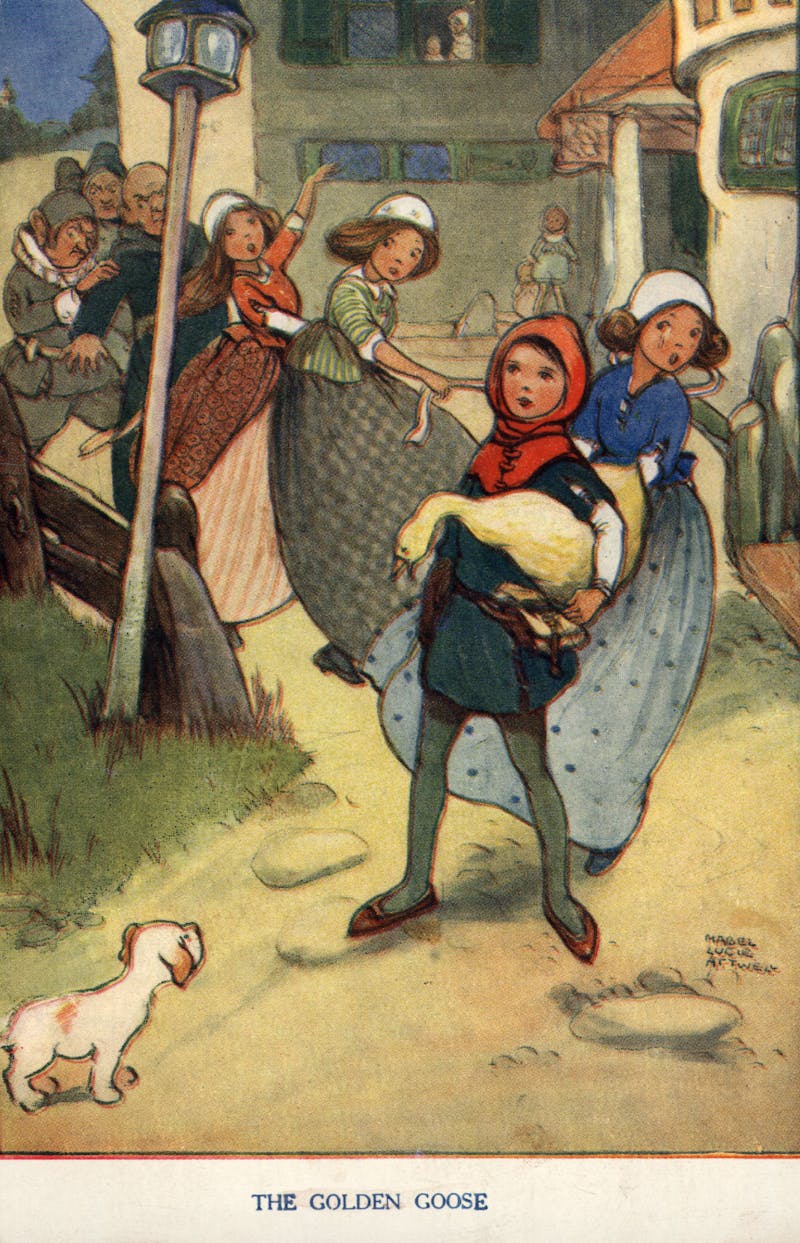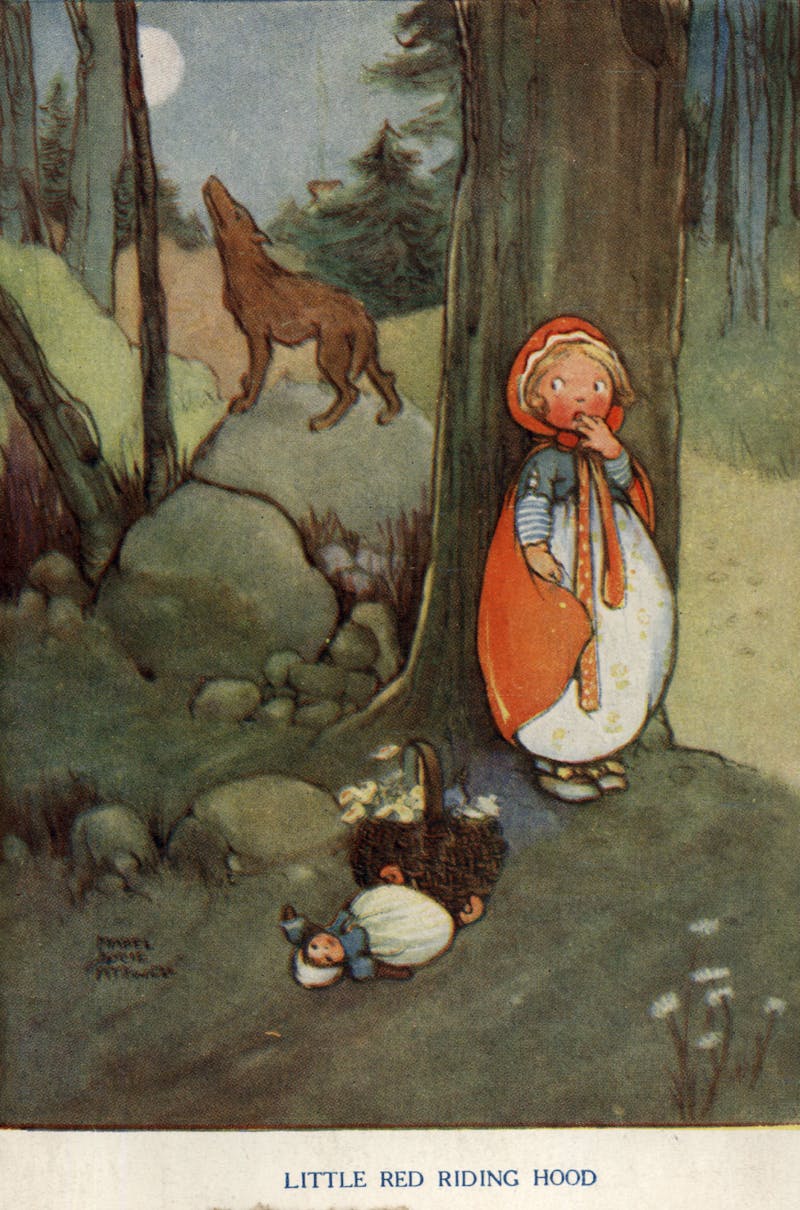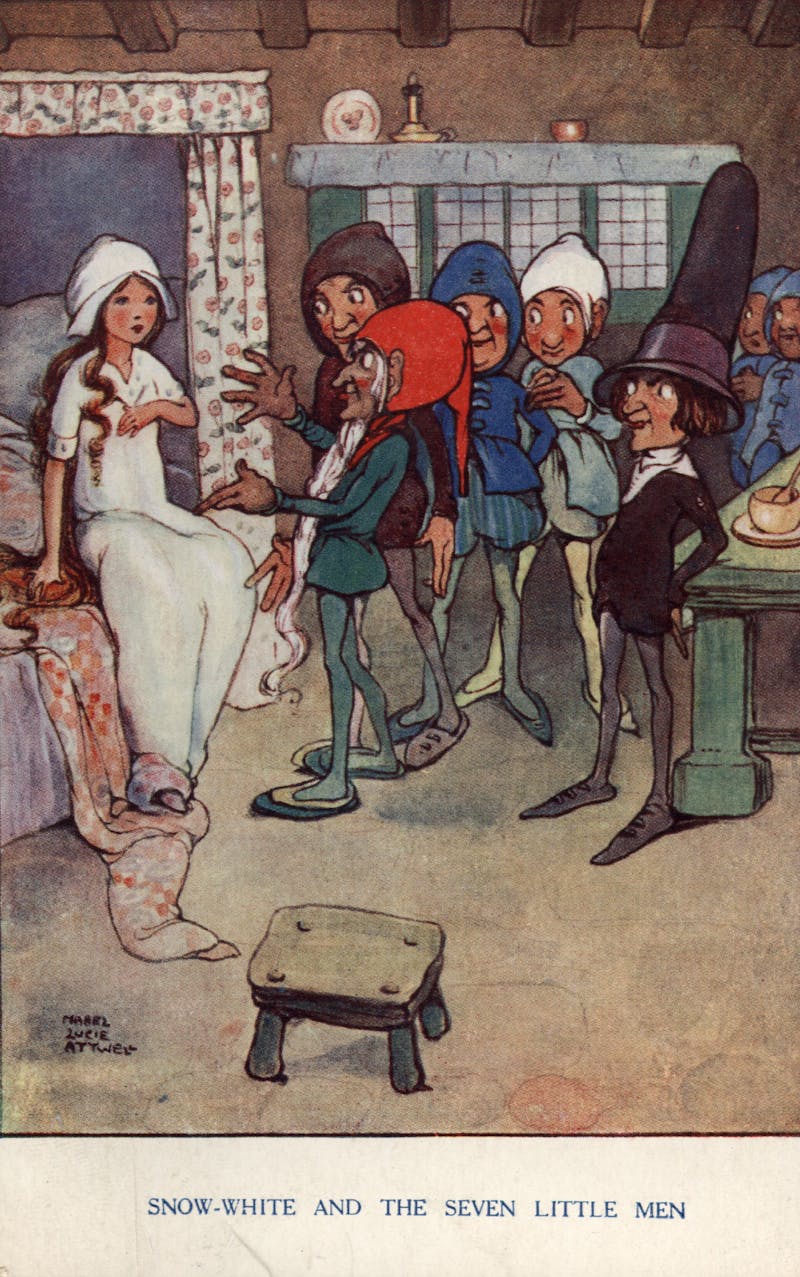Phillip
Pullman, notable for His Dark Materials
trilogy is not alone in believing that fairy tales bear no psychological heft and
therefore call for no psychological discussion. “There is no psychology in a fairy
tale,” he avers: “The characters have little
inner life; their motives are clear and obvious.” And he goes on: “One
might almost say that the characters in a fairy tale are not actually conscious.”
Novelist A. S. Byatt apparently agrees,
for she states that fairy tales “don’t analyse feelings.” Of course, this is superficially
right. We are not privy to the inner worlds of Hans, Cinderella, or Little Conrad
in the story of The Goose Girl. Indeed
most fairy tale characters go unnamed; they perform no Shakespearean soliloquies;
they do not ruminate aloud. Rather, they reveal their thoughts in action. But since
when is action exempt from psychological scrutiny? And are there not fairy tale
characters who do, on occasion, both wish and dream?

Scholars,
moreover, when pressed to consider the problem of motivation in fairy tales, tend
to invoke fate, chance, inevitability and magic. Not psychology. They claim that
tellers, hearers, and readers of the tales accept without question the sufficiency
of fate, chance, inevitability or magic. Quite true. Yet, we must ask why. What
inclines tellers, hearers, and readers to accept fate or magic as causal? What is
it about fairy tale and the human psyche that enables this unquestioning acquiescence
in a realm of discourse that defies ordinary modes of understanding and common sense?
Even if there were nothing else to probe, there is this. And, indubitably, this
is a psychological question.
Marina
Warner touches on the matter in her chapter “The Worlds of Faery,” where she reminds
us of the moment in theatrical versions of the modern fairy tale Peter Pan, when Tinkerbell is dying of the
poison Captain Hook had intended for Peter, and audience members are asked to clap
hands to save her if we believe in fairies. Children have no trouble with this,
but adults clap sheepishly, if at all, while telling themselves they are doing so
for the sake of the children. But the audience’s reactions go much deeper, and Warner
strikes home when she claims the motivation for “these untrue stories” is “a need
to move beyond the limits of reality.” This is a verity explored psychoanalytically
by the notable French analyst Janine Chasseguet-Smirgel in 1984, when she writes,
“Man has always endeavored to go beyond the narrow limits of his condition” (after
which, however, she heads off in a different direction).
The acceptance
of magic and fatedness in wonder tales can be fruitfully considered, I propose,
from a child developmental perspective. If we take that point of view, we can understand
that our vulnerability or susceptibility stems from a persistence in the mind of
a
receptivity we had when all the world was new. Fairy tale carries us
back to this primordial kind of attention, the attention we gave the world when
everything was “for the first time.” In earliest childhood, noticing and remarking
matters most. Have you watched a small child gaze around, letting her eye be caught
by this and that? Have you asked her to tell you about her day? The narrative will
be disjunctive, lacking formal reason, yet filled with all that truly matters: filled
what was seen, heard, tasted, touched, smelled, felt. The “why?” comes later. And
of course such a way of perceiving is full of surprise: both unexpected delight
and terror. Here is how a typical tale proceeds: Something happens. Then something
else. Another occurrence. And another. And yet again another. But the nature and
order of these events defy logic. Connections seem arbitrary if they exist at all
and contiguous in a purely temporal register, with one experience simply following
another.
Let’s
take the Grimms’ Tale 42, in which a poor man with many children dreams he must
ask the first person he sees to be their godfather. He does so, and the stranger
gives him a bottle of water, which he says will cure a moribund individual if Death
stands at the person’s head but not if Death stands at the person’s feet. The king’s
child falls ill. Death stands at the child’s head; the poor man cures him. The king’s
child falls ill again, and it goes the same way. The third time, Death stands at
the foot of the bed; now the child dies. The poor man goes to tell the godfather.
On the way, he notices a shovel and a broom quarreling. Next, he encounters a pile
of dead fingers that also talk. Then, a pile of speaking skulls. Finally, he comes
upon some fish who are frying themselves in a pan. Each group tells him to climb
higher so as to find the godfather. The poor man does so and finally peeps through
a keyhole, where he sees the godfather with a pair of long horns. The godfather
hides under a blanket and, after interpreting the other visions, denies that he
has horns: “Now, that’s just not true,” he says, and the story is over!
Vivian
Gussin Paley, a distinguished MacArthur prize-winning writer on young children’s
story creation and on their impromptu performances of their own stories, and Selma
Fraiberg, beloved author of The Magic Years,
a classic book on child psychology, would, I feel certain, detect in
this tale the form of narration plotted by children
who spring for vivid imagery with no concern for binding logic. Faerie employs a
primordial mode of narration.

Let’s
make an anachronistic thought experiment and imagine Aristotle, in his unsurpassed
treatise on poetics, analyzing the plot of Tale 42. Indubitably, he would characterize
it as “post hoc,” rather than “propter hoc,” its events tumbling pell-mell, its
paucity of causal logic, and the story ending up so far from where it begins. Trusting
in reason and seeking to understand the elements of a refined, well-crafted plot,
Aristotle would scarcely approve of this mode, or possibly he would treat it as
comical, which, in part it is.
Turning
the clock back even further than fourth century BCE Athens, again for just a moment,
let’s consider Genesis. Genesis, like fairy tale, is paratactic: it strings events
together by conjunctions absent the subordinate clauses that perform causality.
Like faerie, Genesis yields minimal, non-elaborated stories. Its characters are
never described in detail (we learn only that Leah had weak eyes), and we are no
more privy to Adam’s feelings when Eve offers him the forbidden fruit than we are
to the poor man-in-Tale-42’s feelings when he comes upon the blanketed godfather.
When
characters are so scantly depicted, what makes us care about what happens to them?
In the case of Hansel and Gretel, we do not even know how old they are meant to
be, and every artist who has illustrated the tale has freely chosen their ages.
How do these lacks affect our interest? Could it be in part that
the lacunae prime our attention by giving us puzzles and riddles we feel drawn to
solve?
I propose
that, when confronted with texts of this kind, whether scriptural, mythical, or
faerie, we are hooked not only by what is given, the positive imagery, but by the
very gaps—“the negative spaces”—as we might say in visual arts. In this manner,
the tales take on a projective valence, rather like a species of narrative inkblots.
Meaning-making occurs through ongoing, evolving negotiations that are historically
bound but highly idiosyncratic. For young children, the key word becomes “why?”
plus its variants. Why is the king’s child sick? Why does Death stand at the foot
of the bed? Who is Death? What happened to all the poor man’s own children? Why
doesn’t he have a name? Why does the godfather have horns, and why does he say he
doesn’t? A very young child will listen wide-eyed, an older child will pose questions,
and an educated adult will feel impelled to criticize but with a gnawing
deep-down feeling that the story merits attention and bears a species of uncanny
truth. More anon concerning the uncanny.
Warner
documents the process of meaning-making over time vis-à-vis fairy tales in her chapters
“In the Dock” and “Double Vision.” She traces a plethora of feminist re-readings
and ideological exposés
that probe the stories for their patriarchal biases and subject them to ironic re-visionings
and critiques. Especially poignant is her citing of Eva Figes’s 2003 description
of reading fairy tales to her granddaughter. Because Figes’s own grandmother perished
in the Nazi camps, she cannot bear the horrible fate of Red Riding Hood’s grandmother
and avoids that story altogether. Cradling the little girl with her arm as she reads
other tales, she points out details in the illustrations and takes care to allay
incipient fears by explaining that witches do not really exist and, regarding Snow White, that women do not die today when
babies are born, even though they did so once long ago. But of course, witches do
exist and mothers do die in childbirth, even today, and what signifies here is the
differential projection of Figes’s own life story into her rendition. Another nana
would tell it differently. And in that case it would, and it would not, be the same
story.
Marina
Warner’s previous book, her masterful, monumental Stranger
Magic: Charmed States and the Arabian Nights, contains an interlude of special
delight to psychoanalysts, for she describes there the figured oriental carpet that
covered Freud’s analytic couch in Vienna. Conjuring it, she proceeds to link it
with the ornamented tasseled flying carpets of antique Araby and suggests that
an analysand who reclines supine on Freud’s carpeted couch with eyes closed is primed
thereby to lift off into realms of unconscious fantasy. In just this manner, I
wish to hint at links between psychoanalysis and fairy tale in the twinning of
inward mental journeys and the ways these stories have of spiriting us off to fascinating,
hitherto uncharted realms, which were there all the time, somehow.

In Once Upon a Time, Warner includes
“On the Couch,” a chapter in which she acknowledges the relevance of psychoanalysis
for fairy tales but reveals a certain ambivalence by adding a flippant subtitle,
borrowed from Angela Carter: “House-Training the Id.” The chapter begins with a
measured appreciation of Bruno Bettelheim’s iconic study, The Uses
of Enchantment (1976), in which, in my view, Bettelheim dons hand-blown German
antique spectacles, seedy and wavy, that permit vision but impel distortion. He
uses them to read a chosen set of European fairy tales, including Little Red Riding Hood, Sleeping Beauty, and so on, for their sexual
and developmental themes, sometimes in a ham-handed way, for subtlety is not his
forte. Yet, Warner’s assessment of his work seems wise, fair-minded, and charitable,
for Bettelheim became notorious rather quickly for his alleged reductionism, and
he has been mercilessly satirized for exemplifying the excesses of psychoanalytic
zealotry. Generously and tactfully, Warner realizes there is much of value to be
gleaned from his book.
A
point Bettelheim overlooked is that fairy tales can be regarded
as psychologically interesting in form
as well as in content. Their mode of
narration, the structure of the stories, matters as much as the imaginary
psychic lives of specific characters. A key
concept here is Freud’s notion of the uncanny,
by which he meant the way in which familiar objects and events and people can suddenly
seem strange and vice versa. This is of course part of the strategy at play in Tale
42. Selma Fraiberg, previously mentioned,
has gracefully shown how the first few years of life are inevitably “uncanny” for
children, a topic noted and often brilliantly exploited by the finest children’s
book authors and illustrators. An example would be Russell Hoban and Garth
Williams, Bedtime for Frances, where
the title character, a little girl badger, in the dark at night, sees her bathrobe
thrown over a chair and thinks it a giant that has come to “get” her. The uncanny
has connections, moreover, with the absurd and with notions of epistemological uncertainty.
We accept the irrational elements of faerie and its enchantments in the same way
we acknowledge that parts of our minds are unconscious—unknown and unknowable to
us—and yet very much there, extant, real, true, significant.
If, by
the term “psychological,” we mean relevance for mental life in its entwined cognitive
and affective functioning, we are right to invoke it here, for fairy tales speak
directly and indirectly to the psyche. They stimulate rainbows of feeling, insatiable
curiosity, and inexhaustible searches for meaning. Psychology, moreover, pace Bettelheim,
Pullman, and others concerns more than the so-called imaginary inner lives of characters;
it concerns the experience of listeners and readers. Year after year, we still need
to know what will happen to Cinderella and Rapunzel, to Jack, to the man who needed
a godfather, and to the unnamed youngest daughter who asked her father for a rose.
Beyond glittering imagery of silver and golden-haired princesses, roses, shiny keys,
and iron caskets, thorns, and fry-pans, we are pulled by our deep yearning for,
and terror of, that which defies understanding. Beyond sense and beyond justice
and morality, the fairy tales beckon us and we sit on the edge of our chairs waiting
to find out what lies ahead—even when we have heard the tale a dozen times before.
Lead image: A postcard showing the princess from the fairy tale ‘The Frog Prince’ by the brothers Grimm.
Open all references in tabs: [1 - 3]